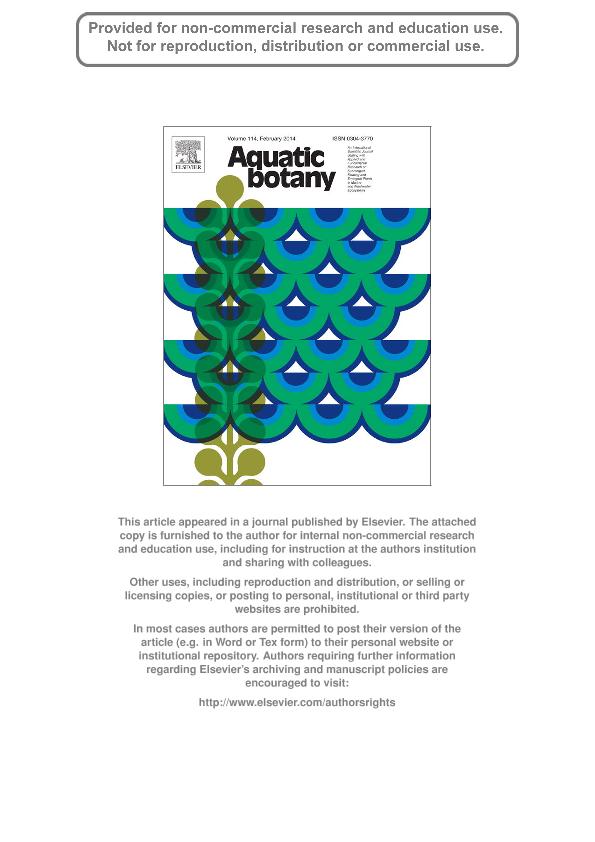Artículo
Do aquatic plant assemblages in the Paraná River change along the river's length?
Neiff, Juan Jose ; Casco, Sylvina Lorena
; Casco, Sylvina Lorena ; Mari, Eliana Karina Alejandra
; Mari, Eliana Karina Alejandra ; Di Rienzo, Julio Alejandro; Poi, Alicia Susana G.
; Di Rienzo, Julio Alejandro; Poi, Alicia Susana G.
 ; Casco, Sylvina Lorena
; Casco, Sylvina Lorena ; Mari, Eliana Karina Alejandra
; Mari, Eliana Karina Alejandra ; Di Rienzo, Julio Alejandro; Poi, Alicia Susana G.
; Di Rienzo, Julio Alejandro; Poi, Alicia Susana G.
Fecha de publicación:
02/2014
Editorial:
Elsevier Science
Revista:
Aquatic Botany
ISSN:
0304-3770
Idioma:
Inglés
Tipo de recurso:
Artículo publicado
Clasificación temática:
Resumen
We studied the distribution pattern of aquatic plants along the Paraná River from its confluence with the Iguazú River to the Delta (2366. km). At three representative locations, Upper Paraná, Lower Paraná, with Paraná-Paraguay confluence and Paraná-Santa Fe section and, Delta, data were collected during extreme low waters (limnophase) and high waters (potamophase). Species richness and abundance at 325 sites were analyzed for both periods using β diversity and the Indicator Species Analysis (ISA). To evaluate the importance of species-hydrological-phase combinations, linear discriminant analysis was applied. We compared hydrological time series at the same sites using PULSE software. Although there are differences in species richness along the river, we found no clear longitudinal pattern in the distribution and diversity of vegetation along the course of the river. From a total of 62 species for the entire study area, the ISA separated 17 indicator species. There are indicator species in each section and hydrological phase, although 29% of the total was recorded in all river sections. Estimates of β diversity (spatial turnover of species) among the river sections was higher during low water (β= 16%) than during high water (β= 11%) and varied between 12 and 58% among plots depending on the hydrological phase. Results of this study will contribute to incorporate spatial variation into pulse regime theories of large floodplain rivers. © 2014 Elsevier B.V.
Archivos asociados
Licencia
Identificadores
Colecciones
Articulos(CECOAL)
Articulos de CENTRO DE ECOLOGIA APLICADA DEL LITORAL (I)
Articulos de CENTRO DE ECOLOGIA APLICADA DEL LITORAL (I)
Citación
Neiff, Juan Jose; Casco, Sylvina Lorena; Mari, Eliana Karina Alejandra; Di Rienzo, Julio Alejandro; Poi, Alicia Susana G.; Do aquatic plant assemblages in the Paraná River change along the river's length?; Elsevier Science; Aquatic Botany; 114; 2-2014; 50-57
Compartir
Altmétricas



